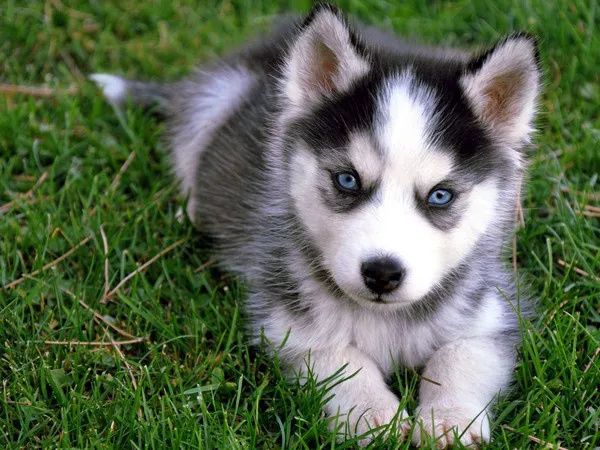Huskies are often mistaken for wolves due to their similar appearance. However, there are a number of key differences between the two species.
Appearance
Huskies and wolves are both large, canines with thick fur. However, there are a number of physical differences between the two species. Huskies have a more slender build than wolves, and their fur is typically lighter in color. Huskies also have a distinctive curled tail, while wolves have a straight tail.
Behavior
Huskies and wolves also have different behavioral traits. Huskies are known for being friendly and playful, while wolves are more independent and solitary. Huskies are also more adaptable to living in human households than wolves.
Genetics
Huskies and wolves are both members of the Canidae family, but they are not the same species. Huskies are descended from dogs, while wolves are descended from wolves. This means that Huskies and wolves have different genetic makeups.
Conclusion
While Huskies and wolves may look similar, they are two distinct species with different physical, behavioral, and genetic traits. If you are considering getting a pet, it is important to choose a breed that is right for your lifestyle and needs.
8 Key Differences Between Huskies and Wolves
In addition to the differences in appearance and behavior mentioned above, there are a number of other key differences between Huskies and wolves. These include:
- Size: Huskies are typically smaller than wolves. Adult Huskies stand between 20 and 23 inches tall at the shoulder, while adult wolves stand between 26 and 32 inches tall.
- Weight: Huskies are also lighter than wolves. Adult Huskies weigh between 35 and 60 pounds, while adult wolves weigh between 45 and 100 pounds.
- Lifespan: Huskies have a longer lifespan than wolves. Huskies typically live for 12 to 15 years, while wolves typically live for 8 to 12 years.
- Temperament: Huskies are typically more friendly and playful than wolves. Wolves are more independent and solitary.
- Social structure: Huskies are pack animals, while wolves are family units.
- Diet: Huskies are omnivores, while wolves are carnivores.
- Habitat: Huskies are adapted to living in cold climates, while wolves are adapted to living in a variety of climates.
Are Huskies Dangerous?
Huskies are not inherently dangerous dogs. However, like any dog, they can be dangerous if they are not properly socialized and trained. Huskies are known for being playful and energetic, and they can be destructive if they are not given enough exercise. They are also known for being escape artists, so it is important to keep them properly fenced in.
If you are considering getting a husky, it is important to do your research and make sure that you are prepared to provide them with the proper care and training. Huskies can be wonderful companions, but they are not for everyone.
How to Tell the Difference Between a Husky and a Wolf
If you are not sure whether you are looking at a husky or a wolf, there are a few key things to look for. Huskies have a more slender build than wolves, and their fur is typically lighter in color. Huskies also have a distinctive curled tail, while wolves have a straight tail.
Here is a table that summarizes the key differences between huskies and wolves:
| Feature | Husky | Wolf |
|---|---|---|
| Size | Smaller | Larger |
| Weight | Lighter | Heavier |
| Lifespan | Longer | Shorter |
| Temperament | Friendlier, more playful | More independent, solitary |
| Social structure | Pack animals | Family units |
| Diet | Omnivores | Carnivores |
| Habitat | Cold climates | A variety of climates |
If you are still unsure whether you are looking at a husky or a wolf, you can always consult with a veterinarian or animal behaviorist.


